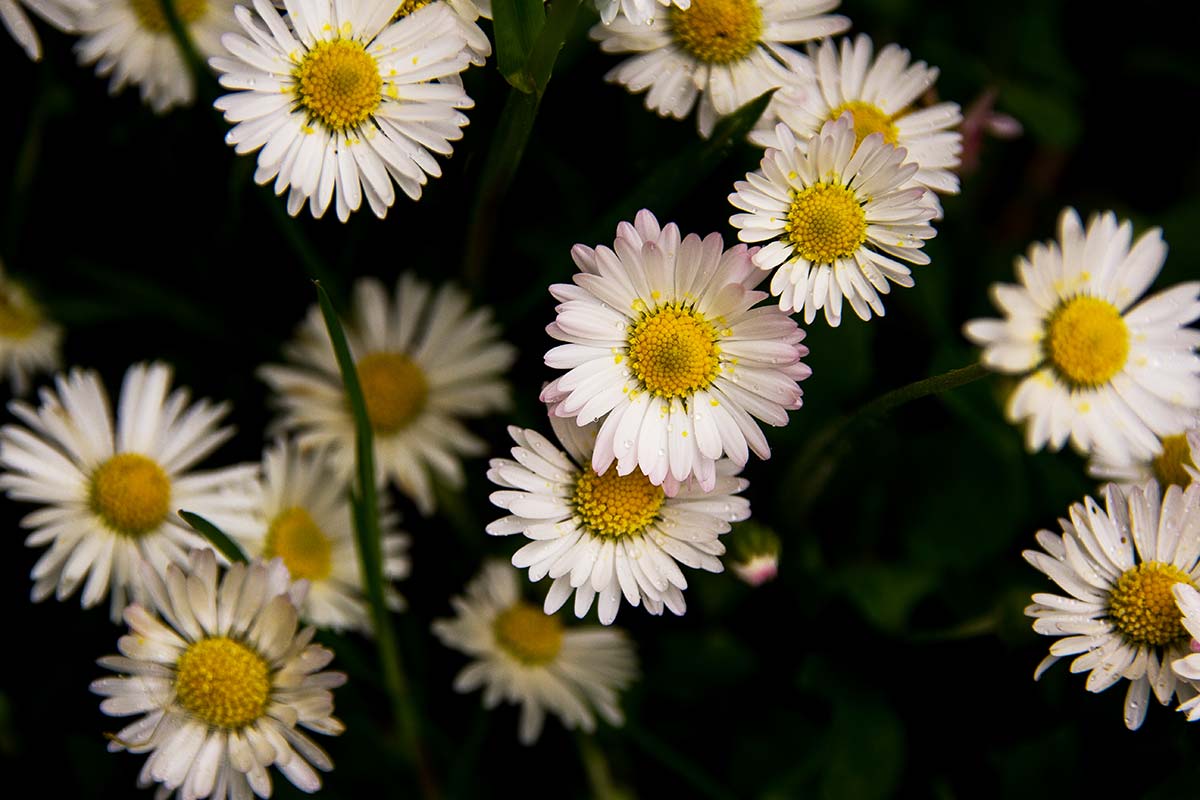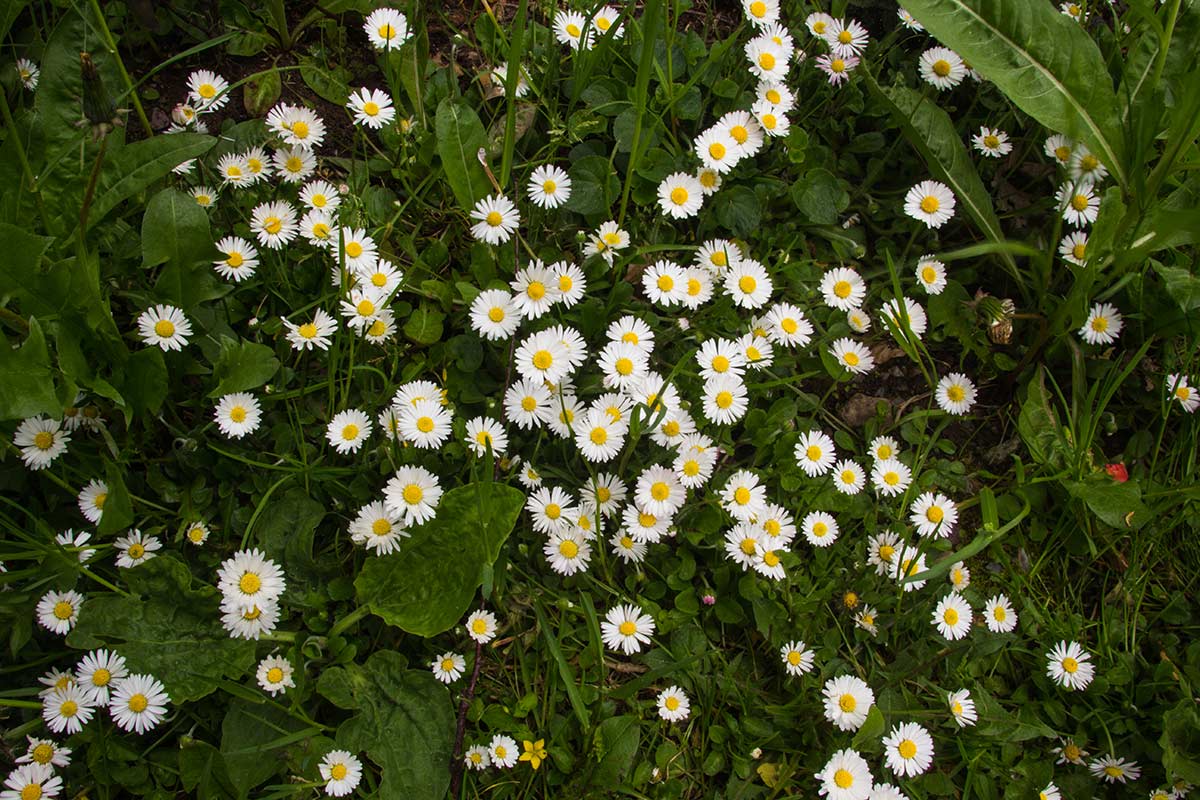Daisy
Common names
Latin name
Family
Parts used
Botanical description, cultivation and harvesting
A rosette of spoon shaped leaves that hugs the ground with the flowers arising on hairy stalks. The composite flower is a single capitulum with a domed yellow central disc surrounded by white rays (sometimes with a pink tinge) It does not like very acid soil and occurs in grassland. Ornamental forms with multiple rays and deeper colours are available. Native throughout Europe, naturalised in other places. There is rarely any need to cultivate other than limit weeding as it easily occurs in lawns and beds. Harvest of flwers is from April until around October, depending on the climate.
History, folklore, taste and energetics
Sour, due to the high vitamin C content. Daisy may well be a corruption of ‘day’s eye’ referring to how the flowers open in sunlight. Bellis probably refers to its beauty and perennis to the fact that it is both perennial and also self seeds freely and therefore once present is difficult to eradicate (not that one would want to).
It is as effective as Arnica for bruising ( and much easier to cultivate, as well as being native). It is a flower long associated with childhood and in homeopathy is used for bruising in childbirth both for the mother and baby, and birth trauma in general. It seems to help us recover from the bruisings and woundings of childhood at any age. Recently we harvested daisy heads to make an infused oil for a summer skin balm; when I went to see how the students we getting on they wwere all sitting in the daisy patch with daisy chains round their wrists, their necks, in their ears, on their heads with the most happy, innocent smiles on their faces (these students were aged 25-50 and had the expressions of delighted children on their faces).
There seems to be an affinity to the solar plexus, that healthy yellow central disc; an open clear solar plexus with pure, innocent energy radiating in the form of the white rays. Opening the solar plexus allows trapped emotional energy to move down to the earth to ground or clear up through the crown to dissipate. A clear solar plexus will allow the information we receive from the world to pass through and flow on. Daisy also seems to help us see clearly and to clear our eyes, our inner seeing of those traumatic images and memories that may cloud our inner vision and make us look at the world in a jaundice manner; it can also clear the rose tints that prevent us seeing people clearly, warts and all. There is a lot more to this plant; the way it roots firmly to the ground, is well grounded, and from there reaches up to bask in the sun.
Constituents
Saponins, essential oil, resin, mucilage, bitters, vitamin C.
Actions
- Vulnerary
- Astringent
- Expectorant
- Anti-inflammatory
- Cicatriscant
Traditional and current uses
Externally:
- Bruises
- Sprains
- Wounds
- Sun damge to skin
- Cuts and grazes
- Boils
- Skin disorders
Internally:
- Bronchitis
- Bronchial catarrh
- Gastro-enteritis
Recipes
Plantain and Daisy Skin food
Harvest equal quantities of plantain leaves (either ribwort or larged leaved) and daisy flowers and place in a pyrex bowl in a bain marie. Cover with olive oil and simmer for 2 hours. Leave over night and then press off. This may be used simply after bathing or showering to nourish the skin. It can also be use to prepare a bumps and bruises salve by adding 35g beeswax per 500 ml and 2% each lavender and tea tree essential oils.
Daisy flowers ( an a few young leaves) can be added to forage salads and are rich in vitamin C.
Daisy tea can be taken internally for the chest and stomach. The decoction or infusion can also be added to the bath.


